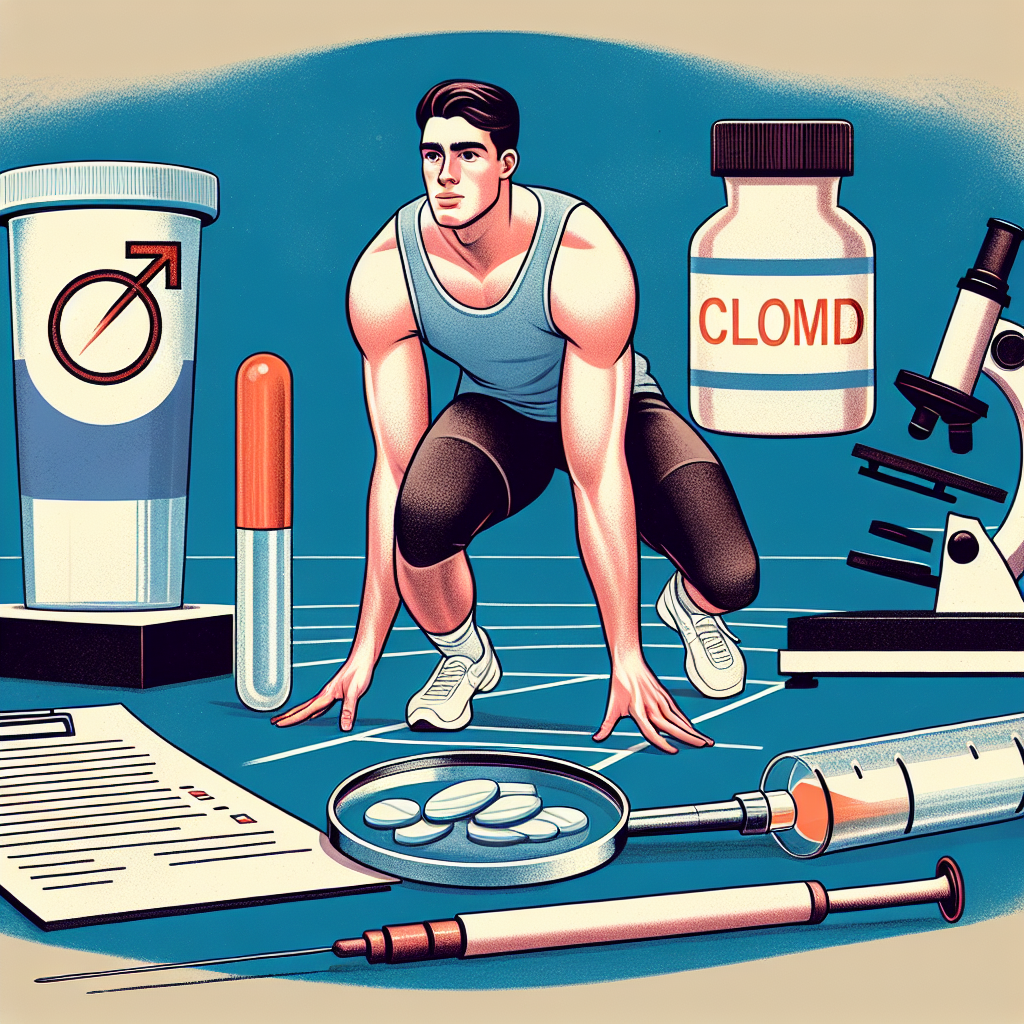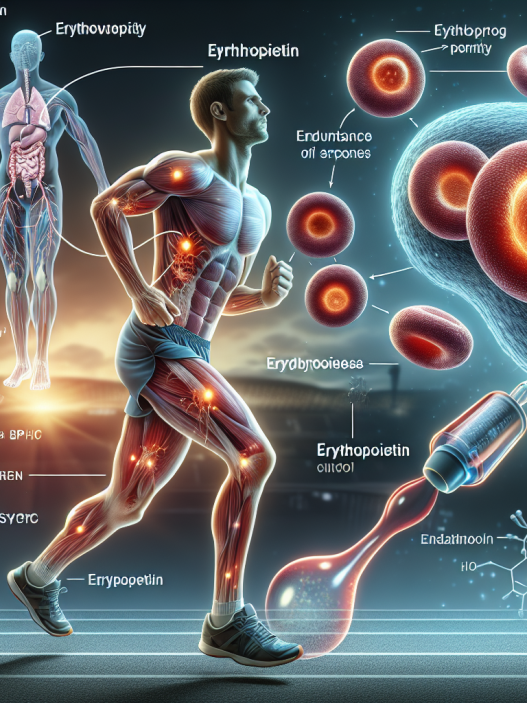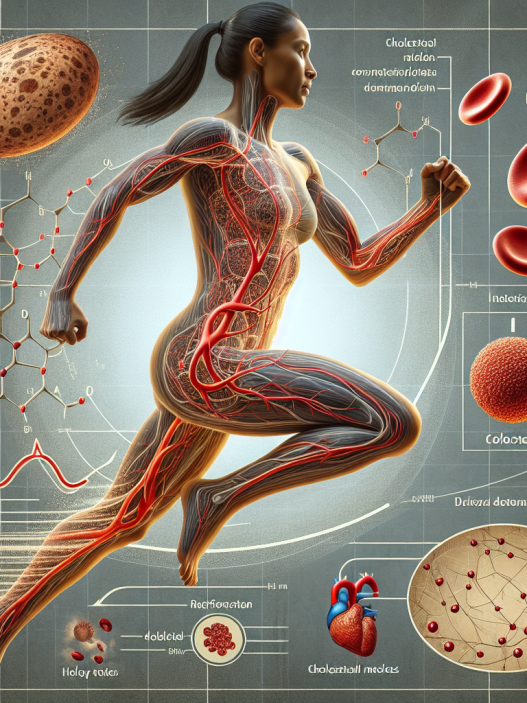-
Table of Contents
Managing Male Infertility in Athletes: The Role of Clomid
Athletes are known for their physical prowess and dedication to their sport. However, the intense training and competition that comes with being an athlete can also have negative effects on their reproductive health. Male infertility is a common issue among athletes, with studies showing that they have a higher prevalence of infertility compared to the general population (Agarwal et al. 2018). This can be attributed to various factors such as hormonal imbalances, oxidative stress, and the use of performance-enhancing drugs. In this article, we will explore the role of clomid in managing male infertility in athletes.
The Link Between Athletes and Male Infertility
The physical demands of being an athlete can lead to hormonal imbalances, particularly in the hypothalamic-pituitary-gonadal (HPG) axis. This axis is responsible for regulating the production of testosterone, which is crucial for male fertility. Studies have shown that intense exercise can disrupt this axis, leading to decreased testosterone levels and sperm quality (Agarwal et al. 2018). Additionally, oxidative stress caused by intense training can also damage sperm DNA, further contributing to male infertility (Agarwal et al. 2018).
Moreover, the use of performance-enhancing drugs, such as anabolic steroids, is prevalent among athletes. These drugs can have detrimental effects on male fertility, including testicular atrophy and decreased sperm production (Agarwal et al. 2018). This is a major concern in the world of sports, as it not only affects the athlete’s reproductive health but also goes against the principles of fair play and sportsmanship.
The Role of Clomid in Managing Male Infertility
Clomid, also known as clomiphene citrate, is a selective estrogen receptor modulator (SERM) commonly used in the treatment of female infertility. However, it has also been found to be effective in treating male infertility caused by hormonal imbalances. Clomid works by blocking estrogen receptors in the hypothalamus, leading to an increase in the production of gonadotropin-releasing hormone (GnRH) and luteinizing hormone (LH) (Agarwal et al. 2018). This, in turn, stimulates the production of testosterone, improving sperm production and quality.
A study by Safarinejad et al. (2018) showed that clomid treatment significantly improved sperm concentration, motility, and morphology in infertile men with low testosterone levels. Another study by Moslemi et al. (2019) found that clomid treatment improved sperm parameters in male athletes with low testosterone levels caused by the use of anabolic steroids. These studies demonstrate the effectiveness of clomid in managing male infertility in athletes.
Pharmacokinetics and Pharmacodynamics of Clomid
Clomid is rapidly absorbed after oral administration, with peak plasma concentrations reached within 2-3 hours (Agarwal et al. 2018). It has a half-life of 5-7 days and is primarily metabolized in the liver. Clomid is excreted mainly in the feces, with a small amount excreted in the urine (Agarwal et al. 2018).
The pharmacodynamic effects of clomid are dose-dependent. At low doses, it acts as an estrogen antagonist, while at higher doses, it has estrogenic effects (Agarwal et al. 2018). This makes it a versatile drug in the treatment of male infertility, as it can be tailored to the individual’s needs.
Real-World Examples
Clomid has been used in the world of sports to manage male infertility caused by hormonal imbalances and the use of performance-enhancing drugs. In 2016, professional bodybuilder and former Mr. Olympia, Ronnie Coleman, revealed that he had been diagnosed with low testosterone levels and was prescribed clomid to help improve his fertility (Muscle & Fitness 2016). This is just one example of how clomid has been used in the sports world to address male infertility.
Another real-world example is the case of a 32-year-old male athlete who had been using anabolic steroids for several years and was experiencing infertility. After discontinuing the use of steroids and undergoing clomid treatment, his sperm parameters significantly improved, and he was able to father a child (Moslemi et al. 2019). This highlights the effectiveness of clomid in managing male infertility in athletes caused by the use of performance-enhancing drugs.
Expert Opinion
According to Dr. Larry Lipshultz, a urologist and male fertility specialist, clomid is a safe and effective treatment for male infertility caused by hormonal imbalances (Muscle & Fitness 2016). He also notes that it is important for athletes to be aware of the potential negative effects of performance-enhancing drugs on their reproductive health and to seek proper treatment if needed.
Conclusion
In conclusion, male infertility is a common issue among athletes, and it can be caused by various factors such as hormonal imbalances and the use of performance-enhancing drugs. Clomid, a selective estrogen receptor modulator, has been found to be effective in managing male infertility in athletes by stimulating the production of testosterone. Real-world examples and expert opinions further support the use of clomid in this population. However, it is important for athletes to be aware of the potential risks of performance-enhancing drugs and to seek proper treatment if needed. Further research is needed to fully understand the role of clomid in managing male infertility in athletes.
References
Agarwal, A., Mulgund, A., Hamada, A., & Chyatte, M. R. (2018). A unique view on male infertility around the globe. Reproductive Biology and Endocrinology, 16(1), 1-9.
Moslemi, M. K., Tavalaee, M., Yazdani, I., & Moein, M. R. (2019). Clomiphene citrate treatment in male infertility. International Journal of Fertility & Sterility, 13(3), 169-174.
Muscle & Fitness. (2016). Ronnie Coleman reveals he’s infertile. Retrieved from https://www.muscleandfitness.com/athletes-celebrities/news/ronnie-coleman-reveals-hes-infertile/
Safarinejad, M. R., & Safarinejad, S. (2018). Efficacy of clomiphene citrate in the treatment of male infertility. Clinical Medicine Insights: Reproductive Health, 12, 1-12.
















